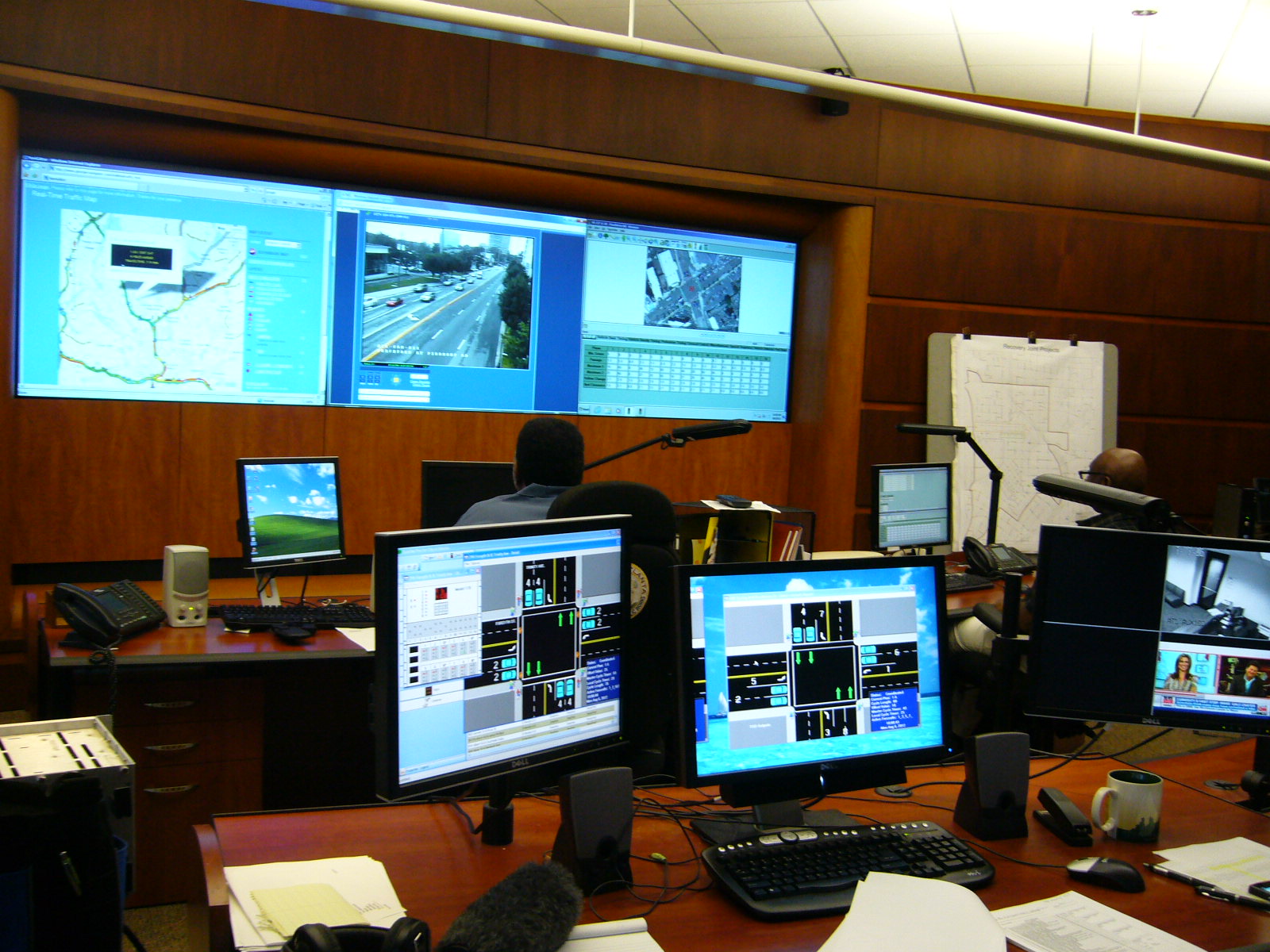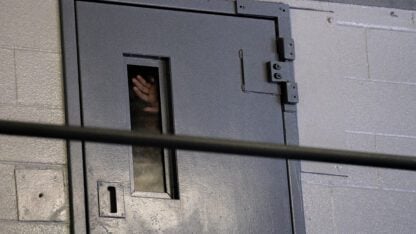Atlanta’s Traffic Signals Out of Synch

One of the biggest traffic headaches for Atlanta drivers is the lack of synchronized signals. The city’s Public Works department is phasing in new technology, but it will take an estimated $35-40 million, so we might be stuck here for a while.
Downtown, in Atlanta’s traffic control center, about six technicians watch three large wall-mounted screens – showing real-time views of traffic. On the left- an overall congestion map of the city. In the center, a live camera feed of the intersection at Piedmont and Pharr roads. On the right, explains Public Works Commissioner Richard Mendoza, is the timing map for the phasing of the signals.
“We can actually monitor on the right screen the actual phasing the lights turning red, yellow, crosswalks” And, then they can adjust them remotely.
So why, you might ask the Commissioner, can’t they synchronize our traffic lights?
“The reason that is occurring, along many of our main corridors, we do not have communications set up between intersections, meaning they can’t talk to each other to stay in synchronization.” He says most of our system is still outdated.
Maybe compare it to dial-up versus high speed connectivity. Repairs and timing resets have to be done manually, with just 10, two-man work crews.
There are 946 signaled intersections in the city of Atlanta, serving a population of 450,000, which swells to over a million during weekday commutes. Mendoza says they’ve updated communications at 144 of those intersections.
“What has to happen is the signal controller boxes themselves have to be updated. Wireless or fiber communications have to be installed between the intersections themselves. And then we need to bring that final link back to this traffic control center.”
The estimated cost for modernizing the remaining 83% of the network he says is between $35 to $40,000,000. Mendoza says they’ve made some improvements already, but they’re taking a phased approach to funding.
“Most recently, we’re applying $4.6 million in recovery zone bonds to the central business district. The midtown area was awarded a $3 million grant from GDOT to modernize the signals.”
They rely on partnerships, along with state and federal funds and grants, and Mendoza plans to aggressively pursue monies from the new transportation bill recently signed by congress.
And when I asked the commissioner about T-SPLOST? He said, “It would’ve given the program a shot in the arm. It would not have filled the entire gap.”
So, he says, they’re just going to continue moving forward with their plan until the system is fully modernized.
“We want to get to the point where all of our intersections we can send and receive data from — that way when we get calls in the morning, from you, that you’re hitting red after red, we can bring up that whole corridor and we can actually see what it’s doing. And then we can adjust that as needed.”
Until then, fasten your seat belt… and prepare for a bumpy ride. If you run into signal problems, Mendoza says to call and report them. They’ll send out a crew.
The number to call to report traffic signal problems is 404-330-6333, the Atlanta Department of Public Works Customer Service.
Here is a list of the 144 traffic intersections with updated signal communication.
View full transcript of interview with Public Works Commissioner Richard Mendoza.
9(MDAxODM0MDY4MDEyMTY4NDA3MzI3YjkzMw004))




